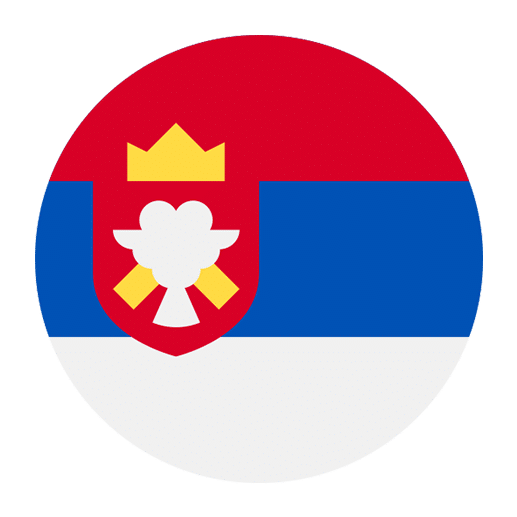The Serbian language, like many others, is a living entity that continuously evolves in response to social, political, and cultural changes. As a Slavic language spoken primarily in Serbia, Bosnia and Herzegovina, Montenegro, and Croatia, Serbian offers a fascinating window into the region’s complex history and contemporary dynamics. In this article, we will explore how social changes have influenced the Serbian language over the years, touching on everything from historical events to modern-day shifts in communication.
Historical Context
To understand how social changes impact the Serbian language, it is essential to consider the historical context. Serbian has undergone significant transformations due to various socio-political events, including the Ottoman rule, the Austro-Hungarian Empire, Yugoslavia’s formation and dissolution, and Serbia’s current status as an independent nation.
The Ottoman Influence
The Ottoman Empire ruled much of the Balkans, including Serbia, for several centuries. This period left a lasting imprint on the Serbian language, introducing numerous Turkish words and expressions. For example, everyday terms like “baksis” (tip) and “čaršija” (marketplace) have Turkish origins. These linguistic borrowings reflect the cultural and social intermingling that occurred during Ottoman rule.
Yugoslav Era
The formation of Yugoslavia in the early 20th century aimed to unify various South Slavic nations under one state. This political union also sought to standardize the language, leading to the creation of Serbo-Croatian. While this initiative aimed to foster unity, it also led to tensions as different ethnic groups sought to preserve their linguistic identities. The breakup of Yugoslavia in the 1990s further complicated the linguistic landscape, leading to the re-emergence of distinct languages like Serbian, Croatian, and Bosnian.
Modern Social Changes
In contemporary Serbia, social changes continue to shape the language. From technological advancements to global cultural influences, various factors contribute to the ongoing evolution of Serbian.
Technological Influence
The digital age has profoundly impacted languages worldwide, and Serbian is no exception. The rise of the internet, social media, and mobile communication has introduced new vocabulary and altered communication styles. English loanwords, especially related to technology, have become commonplace in Serbian. Terms like “kompjuter” (computer), “internet,” and “softver” (software) are now integral parts of the language. Additionally, the informal and abbreviated style of texting and online communication has influenced everyday spoken Serbian.
Example: The phrase “brb” (be right back) has a Serbian equivalent, “vbr” (vratiću se brzo), often used in online chats.
Globalization
Globalization has facilitated the exchange of cultural and linguistic elements between countries. Serbian has absorbed numerous foreign words, particularly from English, due to the widespread consumption of American media, music, and entertainment. This phenomenon is not unique to Serbian but reflects a broader global trend of linguistic convergence.
Example: Words like “selfie,” “trend,” and “influencer” have been adopted into Serbian with little to no modification, demonstrating the language’s adaptability to global cultural shifts.
Political and Social Movements
Political and social movements also leave their mark on language. In Serbia, recent political changes and social movements have introduced new terms and expressions that reflect contemporary issues and ideologies.
Example: The term “evrointegracije” (European integration) has gained prominence in political discourse, reflecting Serbia’s ongoing efforts to join the European Union. Similarly, phrases like “građanska prava” (civil rights) and “ekološki aktivizam” (environmental activism) have become more common as social movements gain traction.
Linguistic Purism vs. Linguistic Borrowing
The tension between linguistic purism and borrowing is a recurring theme in the evolution of Serbian. Some linguistic purists advocate for preserving the language’s Slavic roots and minimizing foreign influences. In contrast, others embrace linguistic borrowing as a natural and enriching aspect of language development.
Linguistic Purism
Linguistic purism in Serbian aims to replace foreign loanwords with native equivalents. This movement often gains momentum during periods of heightened national identity and cultural pride. For instance, during the 19th-century national awakening, efforts were made to “purify” the language by replacing Turkish and German loanwords with Slavic alternatives.
Example: The Turkish-derived word “kafana” (café) was replaced with “kafić” during efforts to purify the language. However, both terms are still in use today, reflecting the ongoing debate between purism and practicality.
Linguistic Borrowing
On the other hand, linguistic borrowing is seen as a natural process that enriches the language. Borrowed words often fill gaps in the native vocabulary, especially in fields like technology, science, and culture. The Serbian language has a long history of borrowing from various languages, including Turkish, German, Italian, and English.
Example: The English word “marketing” has been adopted into Serbian without modification, reflecting the global nature of business and commerce.
Dialectal Variations
Serbian is characterized by significant dialectal diversity, which reflects regional, social, and historical differences. The language is generally divided into two main dialects: Štokavian and Torlakian, with Štokavian being the basis for the standard language.
Štokavian Dialect
The Štokavian dialect is spoken in most of Serbia, Bosnia and Herzegovina, Croatia, and Montenegro. It is the foundation of the standard Serbian language and is further divided into several sub-dialects, including Eastern Herzegovinian, which serves as the basis for literary Serbian.
Example: In the Štokavian dialect, the word for “what” is “što,” which is a defining feature of this dialect group.
Torlakian Dialect
The Torlakian dialect is spoken in southeastern Serbia and parts of Kosovo and North Macedonia. It is considered a transitional dialect between Serbian and Bulgarian, exhibiting features of both languages.
Example: In the Torlakian dialect, the word for “milk” is “mleko,” similar to standard Serbian, but the pronunciation and intonation may differ.
Gender and Language
Gender dynamics also influence language use in Serbian. Like many Slavic languages, Serbian has grammatical gender, with nouns classified as masculine, feminine, or neuter. However, social changes and movements for gender equality have led to discussions about inclusive language.
Grammatical Gender
Grammatical gender in Serbian affects not only nouns but also adjectives, pronouns, and verbs. Each noun is assigned a gender, which must be matched by any related words in a sentence.
Example: The word for “student” in Serbian can be “student” (masculine) or “studentkinja” (feminine). Adjectives and verbs must agree with the gender of the noun, so “dobar student” (good student) becomes “dobra studentkinja” when referring to a female student.
Inclusive Language
The push for gender-inclusive language has led to debates about how to make Serbian more inclusive without compromising its grammatical structure. Some advocate for using both masculine and feminine forms, while others propose neutral terms where possible.
Example: Instead of saying “poštovani studenti” (dear students – masculine), some use “poštovani studenti i studentkinje” (dear male and female students) to be more inclusive.
Language and Identity
Language is a crucial aspect of identity, and in Serbia, it plays a significant role in both individual and collective identity. The Serbian language serves as a marker of national identity and cultural heritage, but it is also a means of personal expression and social connection.
National Identity
The Serbian language is a vital component of Serbian national identity. It embodies the country’s history, culture, and traditions, serving as a unifying force for Serbs worldwide. Efforts to preserve and promote the Serbian language are often tied to broader initiatives to strengthen national identity.
Example: The celebration of “Dani ćirilice” (Cyrillic Days) in Serbia promotes the use of the Cyrillic script, which is considered a key element of Serbian cultural heritage.
Personal and Social Identity
On a personal level, language is a means of self-expression and social interaction. The way individuals speak can reflect their social background, education, and personal experiences. Regional accents, dialects, and slang all contribute to the rich tapestry of the Serbian language, allowing speakers to convey their unique identities.
Example: Young people in urban areas may use more slang and borrow English words, reflecting their exposure to global culture, while older generations in rural areas may adhere more closely to traditional speech patterns.
Conclusion
The Serbian language is a dynamic and evolving entity, shaped by historical events, social changes, and cultural influences. From the Ottoman period to the digital age, various factors have left their mark on the language, contributing to its richness and complexity. The tension between linguistic purism and borrowing, the impact of technological advancements, and the ongoing efforts to make the language more inclusive all highlight the ever-changing nature of Serbian.
As language learners, understanding these social changes can provide valuable insights into the Serbian language and culture. By exploring the interplay between language and society, we can gain a deeper appreciation for the ways in which language reflects and shapes our world. Whether you are a beginner or an advanced learner, delving into the social aspects of the Serbian language can enhance your language learning journey and enrich your understanding of this fascinating region.

